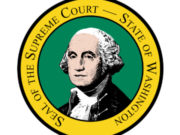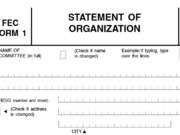A recent article in the L.A. Times is practically bursting with all the things that advocates of campaign finance “reform” love to hear. Money is being “poured” into ballot initiatives, voters are being “confused” and “misled” by television advertising, and we are reminded that “often…the politician or proposition with the most money wins.” Public Campaign, in a blog post titled “Best Election Money Can Buy,” points to this article as proof that something must be done to curb the influence of “wealthy interests [who] are sparing no expense to buy a big bullhorn in the debate.”
Regrettably, the L.A. Times article is typical of campaign finance reporting, and Public Campaign’s response is typical of the “reform” community’s response. We view these sorts of stories and the responses they generate with a more skeptical eye. Even when the facts contained in such stories are accurate, the conclusions that are drawn from them by “reformers” are often marked by muddled thinking and sometimes down-right illogic.
Right out of the gate, the story stumbles into one of the most common logical fallacies surrounding campaign finance: “In the world of politics, the race for money is as intense as the race for votes because often—not always, the politician or proposition with the most money wins.” This point is echoed later on in the piece, when it is noted that, “For statewide political candidates, money is following a familiar trend: Generally the candidates with the most money are the candidates who are ahead in the polls.”
Logically, the only conclusion that can be drawn from this fact is that money buys elections, right? Wrong. That’s certainly the conclusion drawn by the reform community, but it’s also a classic logical fallacy: cum hoc, ergo propter hoc, the assumption that correlation equals causation. It is indisputably true that those who raise the most money often win elections, just as it is indisputably true that children with the largest shoe sizes tend to have the best handwriting. In both of these cases there is a correlation between two events, but mere correlation does not prove that the former event caused the latter. Any event A may be correlated with event B for a number of different reasons.
First, A might not cause B. Rather, B might cause A; candidates aren’t necessarily popular because they have more money, they may have more money because they’re popular. This would not be surprising:
“High levels of campaign contributions to and spending by a candidate often reflect a level of public support that is later manifested at the polls. Generally speaking, the same attribute s that attract voters to a candidate will attract donations, and those that attract donations will attract votes. In other words, the candidate who is able to raise more money would usually win even if that candidate did not spend that added money, because the ability to raise money is itself evidence of political prowess and popularity that would normally translate into votes.”
Smith, Unfree Speech 48-49 (2001).
Another alternative is that both A and B may be correlated with some other variable, C. This explains why children with the largest shoe sizes tend to have the best handwriting; both variables are correlated with the age of the child. In campaign finance, one of our C’s is incumbency, which provides candidates with enormous benefits in terms of name recognition and enhanced media coverage. These, in turn, can drive both polls and fundraising.
Of course, we all feel intuitively that A must have some effect on B, and that’s likely correct. It’s not at all clear, however, what’s so unsavory about this result other than the language reformers use to describe it, i.e., that money “buys” poll results. Poll results, if they are “bought” at all, are not “bought” in any typical use of that term; voters are not being bribed in exchange for their vote. What’s being bought, generally, is the ability to broadcast one’s message. But reformers, as the L.A. Times article shows, object to this too:
“The real tragedy of campaign financing in the initiative process is that hundreds of millions of dollars are being spend to ‘educate’ voters, and yet most of the money is used to buy television ads that confuse, mislead or scare voters and do just about anything but inform them . . . .”
This argument is little more than a naked assertion, and it has two significant additional shortcomings. First, it is based on the insulting premise that voters need guardians to police the political messages they’ll be allowed to hear, something we at CCP would find rather irksome. Second, it is an argument that is only deployed against those who support “bad” policies or oppose “good” policies. Consider this excerpt from the L.A. Times article, which discusses the spending in the debate over California’s Proposition 86, which would mandate a $2.60-a-pack increase in the cigarette tax:
“Hospitals and healthcare groups that stand to benefit from the revenue generated by higher cigarette taxes have collected $14 million to promote the measure. But they are being outspent by tobacco companies and the $55 million those corporations raised to defeat it.”
If the cigarette companies are ultimately successful, the failure of Proposition 86 will undoubtedly be blamed on cigarette companies who “confused”, “misled”, and “scared” voters into voting the “wrong” way. But what if the hospitals and healthcare groups win? No one will accuse them of having “bought” their desired outcome, despite the fact that they will have spent millions of dollars advertising for their cause. No one will argue that their ads were calculated to confuse, mislead, or scare rather than to educate. No one will lament that their involvement in the campaign was motivated by their financial self-interest in receiving the increased tax revenue. Nor will it be mentioned that, despite having outspent their rivals by a nearly 4-to-1 margin, the tobacco companies still lost.
That last point is important. Money is no guarantor of success. Not even close. All things being equal, campaigns that raise more money will, on average, have greater success than campaigns that raise less money. But all things are not equal. Many candidates are incumbents. Some candidates are wealthy and don’t have to raise money. Some candidates are more popular, articulate, or attractive. In a ballot initiative, the arguments in favor of a given policy may be straightforward, while the arguments against it may be complex. Money gives relatively unknown candidates and complex issues a chance to compete against those that are entrenched or superficially appealing, but it does not buy elections. If one needs further proof, consider the Times article’s final anecdote:
“Lt. Gov. Cruz Bustamante, the Democratic candidate, has only a slight lead, pollsters say, over Republican Silicon Valley businessman Steve Poizner. The overall total Poizner has amassed for his campaign is $11 million; Bustamante has collected $1.1 million.
“The difference? Poizner put $8.3 million of his own money into the race.”
Some read this as an ominous sign that millionaires, simply by drawing on their vast wealth, can “buy” their way into politics. We see it as a sign that “buying” one’s way into politics—even when you outspend your opponent 10-to-1—is enormously difficult. We also see it as a strong argument for eliminating contribution limits; the opportunity to compete effectively against well-known candidates should not be restricted to self-financed millionaires.














